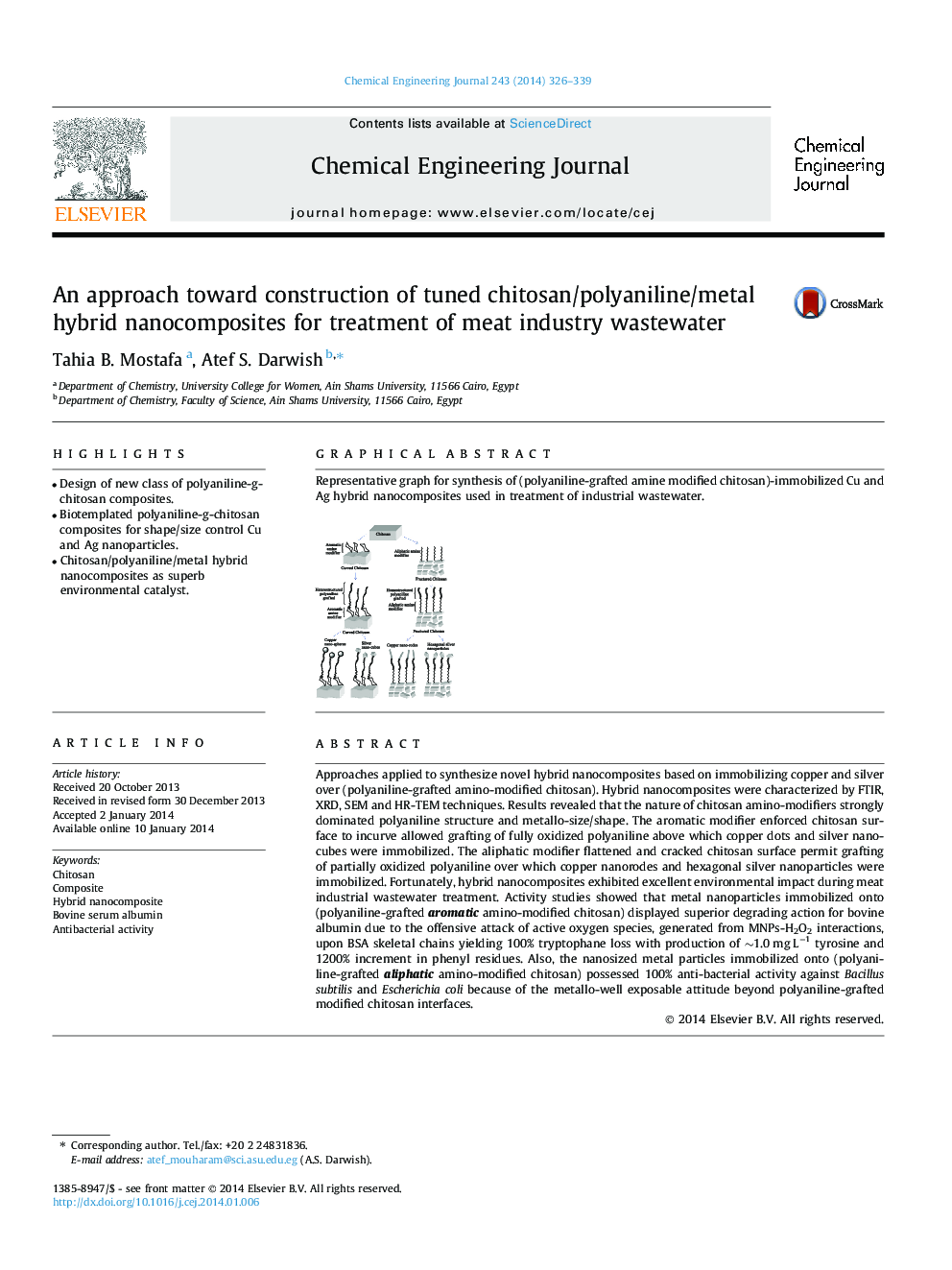| Article ID | Journal | Published Year | Pages | File Type |
|---|---|---|---|---|
| 147877 | Chemical Engineering Journal | 2014 | 14 Pages |
•Design of new class of polyaniline-g-chitosan composites.•Biotemplated polyaniline-g-chitosan composites for shape/size control Cu and Ag nanoparticles.•Chitosan/polyaniline/metal hybrid nanocomposites as superb environmental catalyst.
Approaches applied to synthesize novel hybrid nanocomposites based on immobilizing copper and silver over (polyaniline-grafted amino-modified chitosan). Hybrid nanocomposites were characterized by FTIR, XRD, SEM and HR-TEM techniques. Results revealed that the nature of chitosan amino-modifiers strongly dominated polyaniline structure and metallo-size/shape. The aromatic modifier enforced chitosan surface to incurve allowed grafting of fully oxidized polyaniline above which copper dots and silver nanocubes were immobilized. The aliphatic modifier flattened and cracked chitosan surface permit grafting of partially oxidized polyaniline over which copper nanorodes and hexagonal silver nanoparticles were immobilized. Fortunately, hybrid nanocomposites exhibited excellent environmental impact during meat industrial wastewater treatment. Activity studies showed that metal nanoparticles immobilized onto (polyaniline-grafted aromatic amino-modified chitosan) displayed superior degrading action for bovine albumin due to the offensive attack of active oxygen species, generated from MNPs-H2O2 interactions, upon BSA skeletal chains yielding 100% tryptophane loss with production of ∼1.0 mg L−1 tyrosine and 1200% increment in phenyl residues. Also, the nanosized metal particles immobilized onto (polyaniline-grafted aliphatic amino-modified chitosan) possessed 100% anti-bacterial activity against Bacillus subtilis and Escherichia coli because of the metallo-well exposable attitude beyond polyaniline-grafted modified chitosan interfaces.
Graphical abstractRepresentative graph for synthesis of (polyaniline-grafted amine modified chitosan)-immobilized Cu and Ag hybrid nanocomposites used in treatment of industrial wastewater.Figure optionsDownload full-size imageDownload as PowerPoint slide
